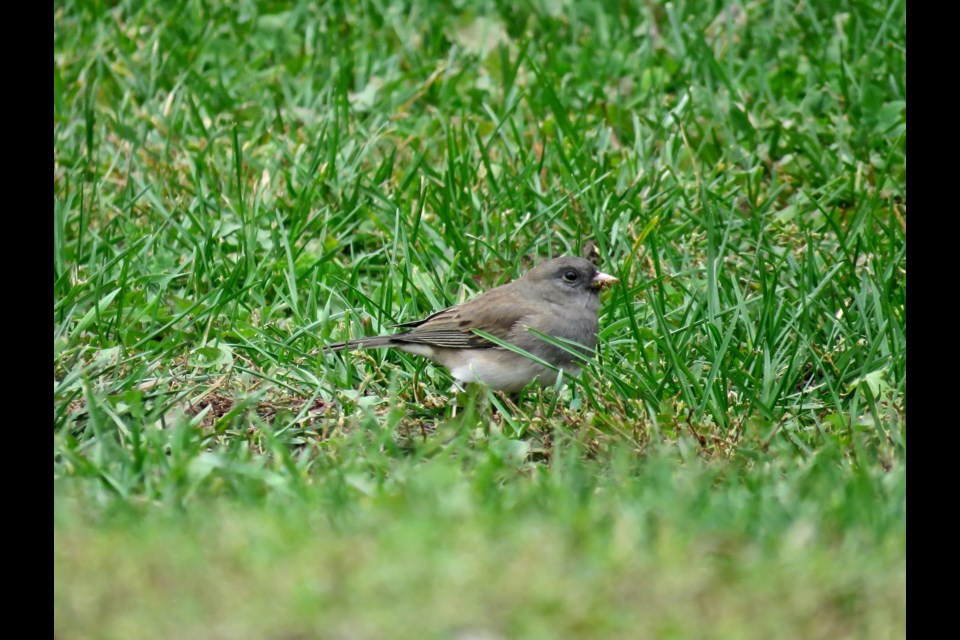I mentioned Dark-eyed Juncos and White-crowned Sparrows in my last column as two bird species that consider Southern Ontario a trip to the tropics. Few of us who live here would agree.
Dark-eyed Juncos are referred to as the “snowbird” as they move south from their breeding ground although not all migrate. They consider here as going south for the winter. When they show up in such places as Southern Ontario we know winter is on the way, thus the snowbird moniker.
Dark-eyed Junco is a medium-sized sparrow that breeds in coniferous or mixed-coniferous forests across Canada, the western U.S., and in the Appalachians, according to allaboutbirds.com. “During winter you’ll find them in open woodlands, fields, parks, roadsides, and backyards.”
They are one of the most abundant forest birds in North America and can be found from Alaska to Mexico, from California to New York. “A recent estimate set the junco’s total population at approximately 630 million individuals”, says allaboutbirds.org.
Although their arrival is a sign of colder weather, I’m certainly always happy to see them.
They flit about and gather in groups under the bird feeders. Sometimes these groups can be quite large. They also eat seeds and sometimes insects found in the grass and in gardens. I often have them on my front steps where seeds from cones of an evergreen are naturally available.
Speaking of natural, it is important to think of birds, and other critters such as bees and butterflies, when cleaning up the garden prior to winter. If you leave some native plants to go to seed such as coneflowers, the birds will eat them. Bees and butterflies can hibernate in decaying leaves.
The Dark-eyed Juncos hop and scratch at the ground to uncover treats. East of the Great Plains, they are slate gray with white stomachs. Females and young juncos may be brownish. Juncos flash white from their tail feathers as they fly. They move quickly from the ground to a bush or tree. West of the Great Plains, the colouration varies.
I found it curious to read on the allaboutbirds.org site that juncos “also forage with other sparrows and bluebirds”. As I mentioned last time, the juncos and the White-Crowned Sparrows arrived here about the same time the Eastern Bluebirds returned to the nesting box. Alas, the bluebirds have now continued south. I look forward to seeing them in the spring.
I ought to say a few words about White-Crowned Sparrows as I keep mentioning them. They are also winter birds in the south but breed in the north, including the Tundra. Like juncos, they tend to be under feeders near bushes and trees and enjoy foraging in the grass and brush piles. They are quite a bit larger than juncos and can be bullies. Perhaps, I will say more about them another time.
I share experiences of bird visitors to this property with readers every couple of weeks. Until next time, keep your eye to the sky, and look for birds that may come by.
Rosaleen Egan is a freelance journalist, a storyteller, and a playwright. She blogs on her website rosiewrites.com



